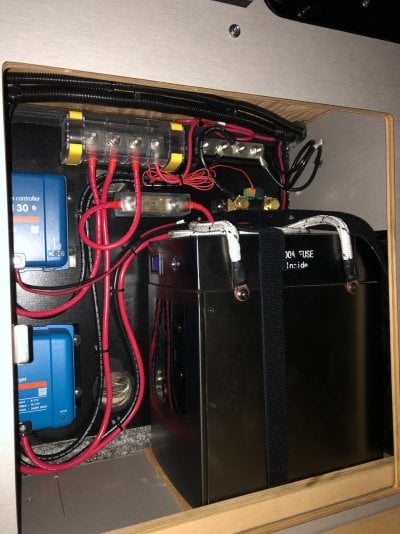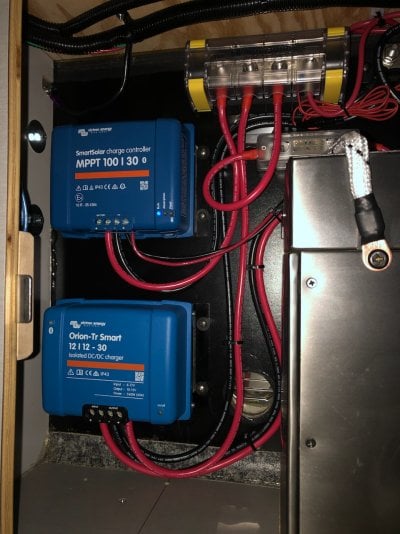Sorry for the long post, but maybe it will be helpful in the future to someone thinking about the isolated versus non-isolated charger question.
I agree that the only reason to consider spending the extra $30 on an isolated charger is if you both 1) can do an isolated system because your camper electrical system can be isolated from the truck body, and 2) have some reason that isolation would be a benefit.
When I was deciding how to configure my system three years ago before my ordered camper was delivered, I read on here that the camper tiedowns did not connect to the metal frame of the camper, which turned out to be accurate. The anchors on the camper are mounted in the tub plywood and are not near any frame or siding metal. So that camper could be isolated.
I was already spending enough on the electrical power system that the $30 difference was trivial, so next i considered whether an isolated system might have a benefit. Being a system safety analyst in my day job, I thought through the possible failures of the camper power system, truck systems, and camp site power supplies. I also considered lightning threats. I didn’t see an obvious lightning benefit either way. However, I did decide that, in a non-isolated system, 120VAC hot shorts to ground in the camper itself or in a connected campsite power source have the potential to put a brief but large voltage spike on the truck’s negative until a circuit breaker or fuse opens. That’s because the actual ground rod in the dirt may be hundreds of feet away and circuit breakers and fuses take some time to open.
I don’t know for sure what effect that voltage spike could have on the truck electronics, but I decided I’d rather protect my truck’s computers from such a spike due to the high cost and inconvenience of damaging one of those computers. However, now that I’ve used the camper for three seasons, I know that I will never connect to a campground power supply, and in fact I never power the 120VAC system in my camper. So my original reasons for wanting an isolated system no longer exists for me.
So that was why I decided to go with the isolated model back when i was installing the power system. The ground connections are easy either way if you have a negative bus bar.
If you want to run isolated and you have a camper with marker lights, you will want to be able to wire them to the truck marker light circuit. To do that, the ground for the camper marker lights needs to be isolated from the camper ground system and connected to the truck ground. When I first wired the camper I could not isolate the marker light ground at the main ground bus bar and, based on the light behavior, assumed the right side marker light ground had been tied to the right rear flood light ground in the rear wall. I therefore gave up on running an isolated system and connected the camper and truck grounds via a 3 amp fuse to get the marker lights to work when the truck markers are on.
However, last summer I discovered a secondary negative bus bar in the right side cabinet that is connected to the primary negative bus bar. I haven’t actually done the testing yet, but I expect I’ll find the right marker circuit ground is connected to that bus bar and I’ll be able to isolate the marker grounds and run the system isolated as I originally intended if I decide to take on an unnecessary wiring project just to satisfy my OCD tendencies. Another project for the Spring. Or not.
Bottom line, as Vic said it’s very easy to wire an isolated charger as a non-isolated charger by connecting both the input and output negatives on the charger to your main battery negative bus bar, and connecting the negative wire from the truck to that bus bar. Most people don’t bother running an isolated system in a truck camper.


